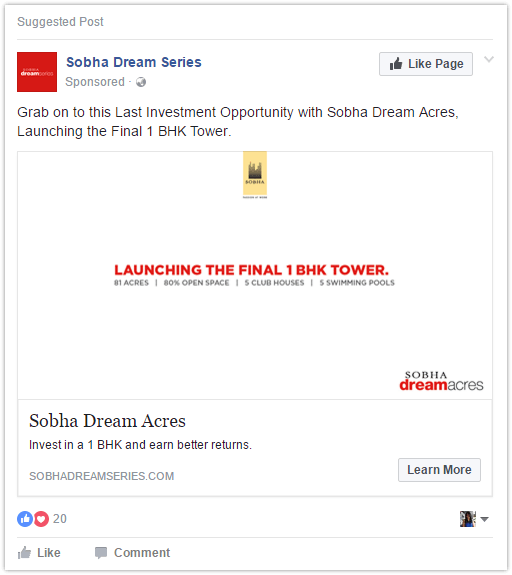Facebook ads have multiple purposes. You can categorize them based on what your goal is. If you are starting a brand new store selling handmade home decor, then you would want to increase brand awareness. If you have designed a brand new app to manage your expenses, then your goal would be app installs. The image below shows you the Facebook ad types that you can choose from.
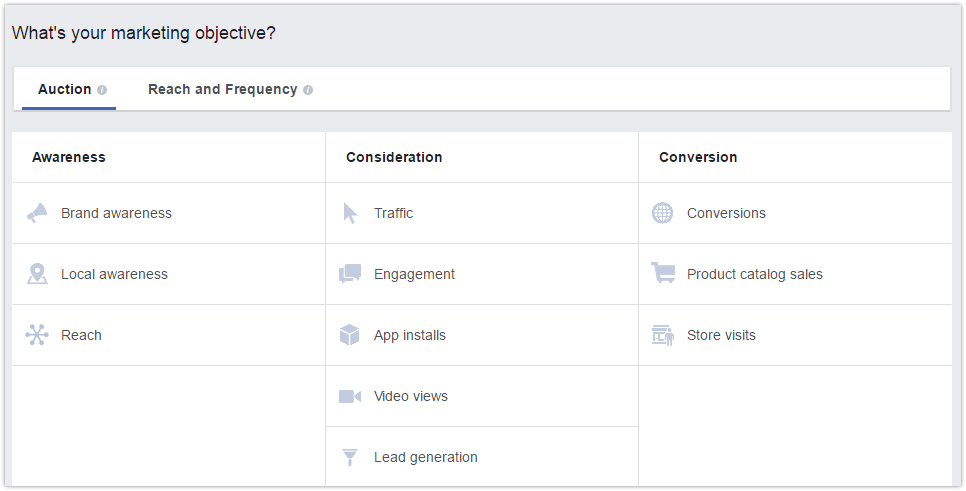
But, since our common goal is lead generation, you needn’t worry about them right now. These are the Facebook ad types that you should concentrate on!
- Lead generation Ads
- Conversion Ads
- Boosted posts
Lead generation ads
Generally termed as Facebook Lead Ads, this feature was rolled out in late 2015. Initially intended only for mobile devices, they have now become available for desktops as well. These ads have become immensely popular with advertisers, since their release. You just choose the “lead generation” option from the ad objective page, to run them.
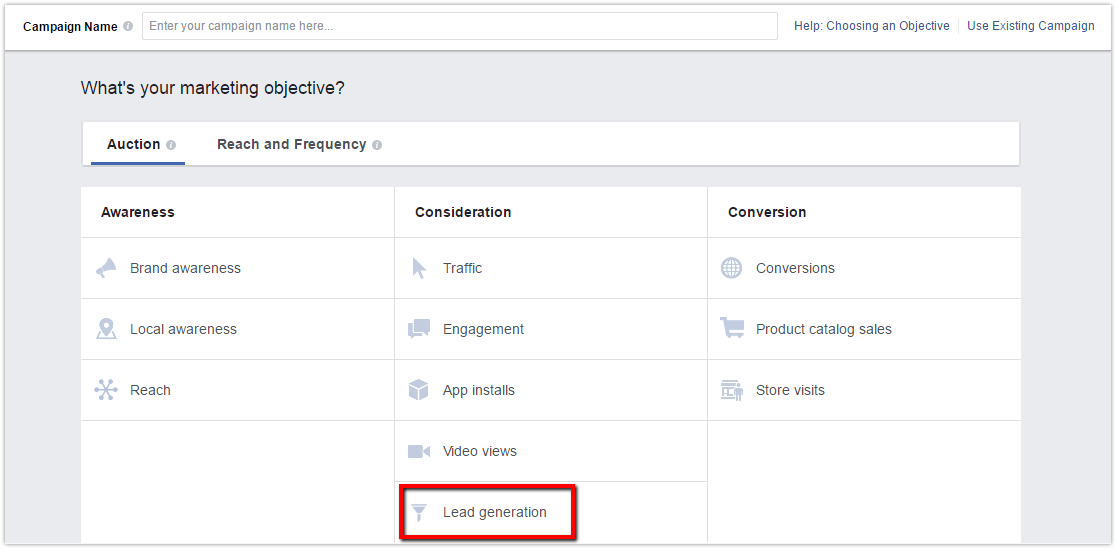
But what makes them so special?
Have there been times when you have wanted to download an e-book or sign up for an event and then you see a big form and go “Never mind”? I’m guilty of that. That’s why Facebook decided to bring in these “Tap, tap, done” ads.
How it works:
- The Facebook user views the ad, finds it interesting and clicks on the CTA (tap).
- A little page pops up containing more information on the product/service and its benefits. The user clicks on the next CTA (tap).
- An auto-filled form pops up, drawing data from the user profile such as name, email address and phone number. Hit on Submit and it’s (done).
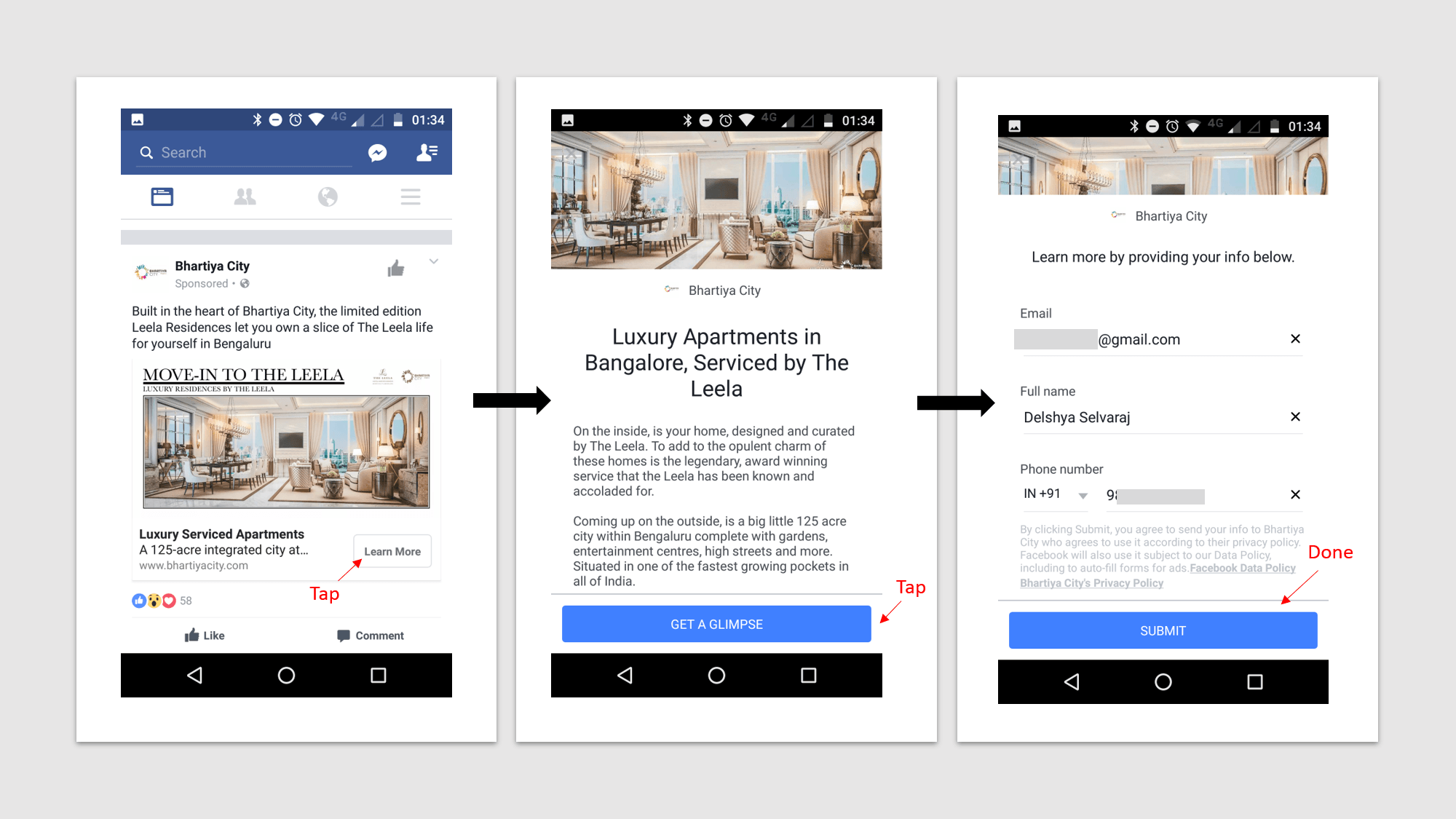
So how do you catch hold of these leads? You can do a CSV export from your Facebook page, under Publishing Tool.
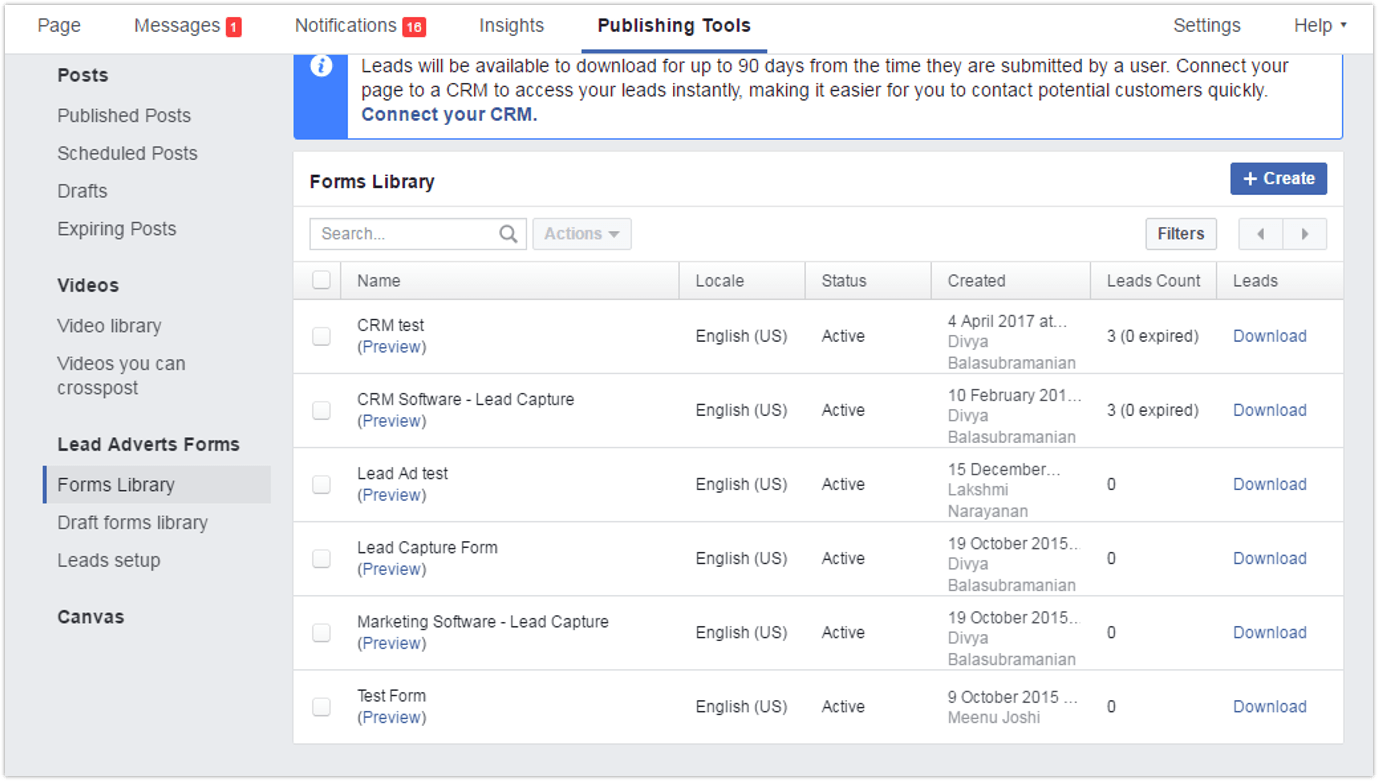
You can also directly capture leads using a lead capture and management system that has Facebook Lead Ads integration, like LeadSquared.
Pros of using Facebook Lead Ads:
- Your leads do not have to fill in a form, which makes signing up easier for them.
- You get more leads at a much lesser cost compared to other lead generation channels.
- Since user data is pulled from Facebook, the details filled would be more accurate.
- Not many people like it when the ads pull them away from their Facebook feed. With Lead Ads, they get to stay right on the platform
- If you do not have a website or a landing page associated with your business, then Lead Ads will work like a charm in generating leads for your business.
The Properati example:
In the Latin real estate marketplace, a company named Properati began using Lead Ads to generate more leads for their business.
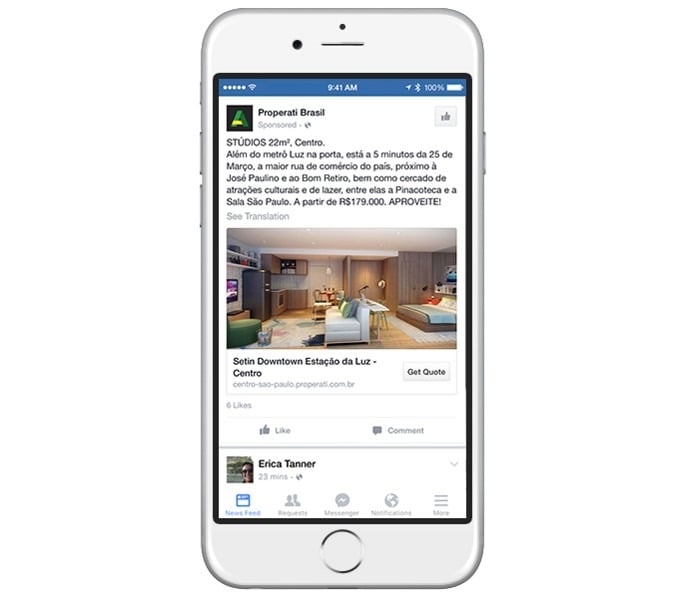
This is what Gabriel Gruber, the CEO of the company, had to say:
“We now have 4x reduction in the cost per lead, with more than 3x increase in the number of leads we normally generate in Brazil“
Cons of using Lead Ads:
While I have been praising lead ads so far, to be completely fair, I also need to point out the flaws it has, to help you make an informed decision.
- As there is no landing page involved, the visitor might not know the exact offer or benefit that you are providing.
- This could lead to misconceptions, which would mean that the relevance of the lead to your business might be low.
- This might reduce the quality of the leads that you receive as well. Many advertisers have seen this happen.
The LeadSquared example:
When Lead Ads first came out, we were as excited as all advertisers out there to try and test them out. And the results were simply amazing.
We got a CTR of 1.26% with a CPC of just 0.27$.
That’s a pretty decent CTR at a low cost.
Unfortunately, we soon began receiving complaints from sales that the leads were of low quality. This was probably because of a message mismatch, as many visitors assumed we provided leads, instead of the Marketing Automation and CRM software that we are. Lack of a landing page and a clear message resulted in an overflow of junk leads which, of course, was not so ideal.
That is why we swear by the next Facebook ad type called…
Conversion Ads:
Before lead ads came into the picture, this was how you generated leads. As the name suggests, you can use these ads to generate website conversions. For each business, the definition of a conversion could be different. It could be
- filling a form on a landing page
- visiting a specified web page(s)
- adding a product to a cart
For a conversion ad to work best. you need to set up your ad with the appropriate targeting, a catchy headline, an image that begs to be clicked and an actionable link that tells the user what is going to happen when he clicks on the ad, like the one below.
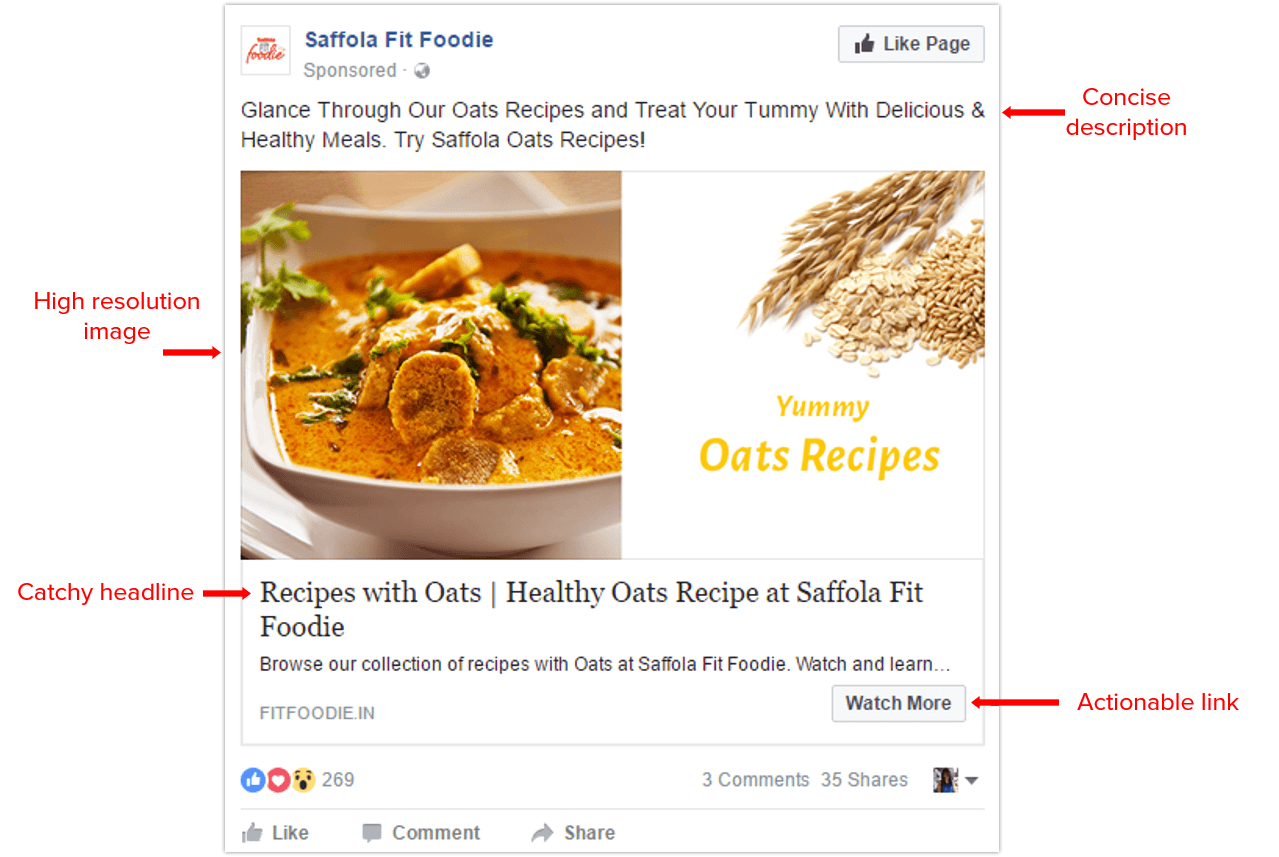
I say appropriate targeting because I have been watching a lot of healthy recipe videos (in an effort to cut down some flab ?), so these ads actually make sense for me. If their goal is for me to visit their page, then mission accomplished, because the page has been viewed and bookmarked.
How it works:
To set up a conversion ad, you just need to go to your objective page and click on conversions.
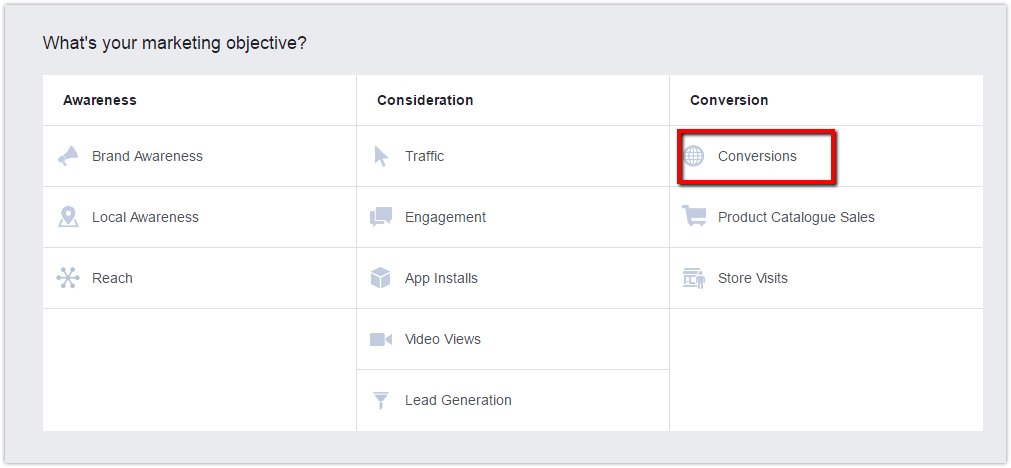
Now, you can simply set up your ad with appropriate targeting (make sure your audience is as wide as possible). Choose an ad format (more on that later), and create a well-designed ad like the one above.
Don’t forget to associate a landing page with your ad, while you are at it. But how do you track the conversions that take place? I’ll cite our own example.
Now if you take a typical LeadSquared ad, this is the path that a prospect would follow to become a lead.
![]()
As you can see, once the ad is clicked on, it takes you to one of our landing pages, where you will need to fill out a form. Once the form is filled you will go to a post submission page.
Now we want people who have come to this post submission page to be captured as leads. Which is why we place our Facebook pixel on this page. Once the tracking pixel is in place, Facebook will know that every visitor who lands on this page is a new lead for LeadSquared.
Benefits of using conversion ads:
- The visitor will get a clear picture of your product/service, as conversion ads allow the use of a landing page.
- The landing page adds authenticity to your brand, simply because it is yours.
- You will get higher quality leads with conversion ads. This is because visitors divulge their details with a better understanding of your business.
Boosted posts:
This is a more subtle and indirect form of lead generation. If you have written a new post on your blog, that you are sure your audience is going to love, then give it a little boost. By doing this you would ensure that your audience doesn’t lose out on your post among the thousands that flood their news feed.
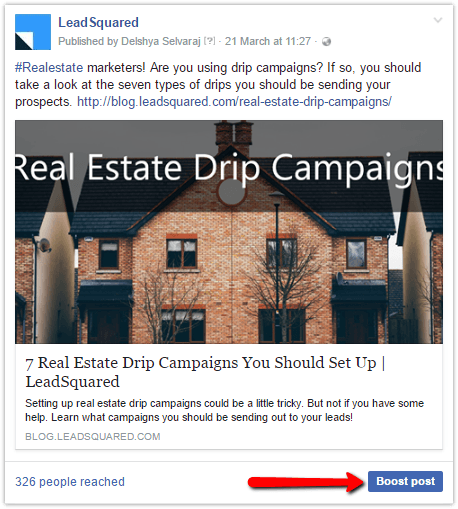
While boosting your posts, ensure that you target the right audience, so that you get the most out of the post. You can choose from any of the options below to improve your targeting.
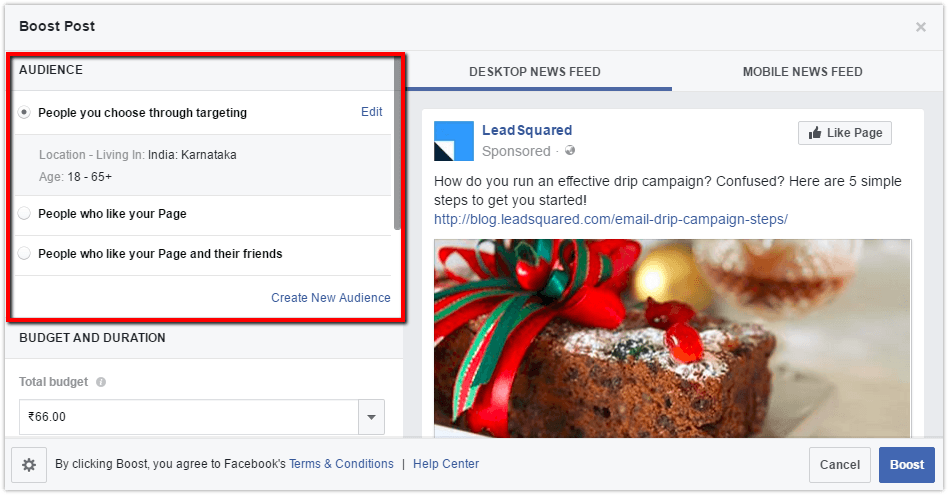
This works best if you post diverse content over a small timeframe. But what if you want to A/B test your posts, to gauge what works better? Or if you are an online store that has various products that would each appeal to different audiences?
Publishing posts on your page and then boosting them would become a pain. Moreover, if someone heads over to your business page, then all they would see is promotional-looking posts.
To avoid this, Facebook allows you to set up unpublished posts as ads. Popularly called as ‘dark posts’, this is how you set one up.

- Go click on the three horizontal lines at the top left corner
- Hit ‘All Tools’ in the bottom of the drop down that appears
- Under ‘Create & Manage’, click on Page posts
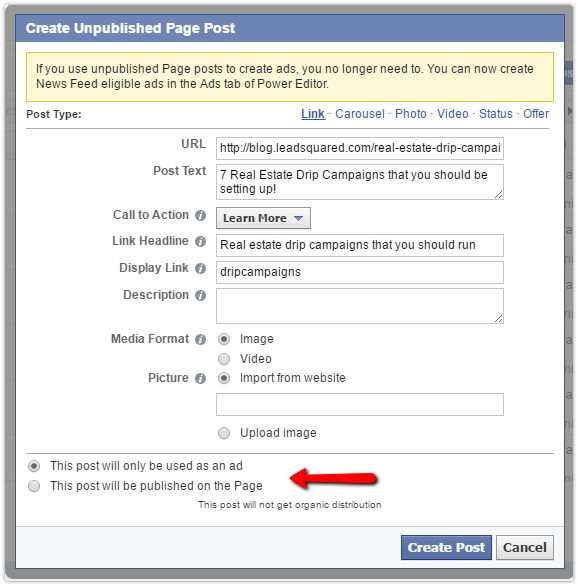
4. Create an unpublished post, and fill in all the fields.
You can choose to run the post as only an ad or publish it on your page also. Here is an example of how you can use dark posts to drive engagement.
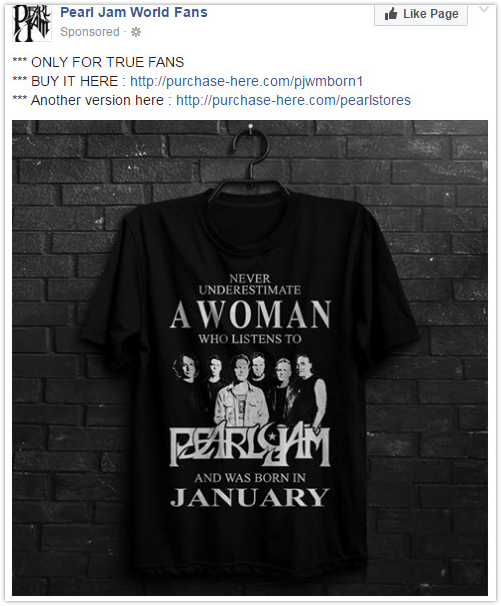
This store that sells T-shirts, ran a targeted post so that only ‘female, pearl jam fans, born in January’ would be able to see it. For a person who fits the bill, this post would not only interest them, they would actually buy from you. (I know I would).
But of course, there are Pearl Jam fans born in months other than January. By duplicating the process and targeting various other demographic segments, their posts would still reach the correct audience, without the hassle of spamming their own business page.
Now, I am going to pick favorites and talk in extensive detail about just one type of Facebook ad. It deserves, this special position! Read on, to know why.





